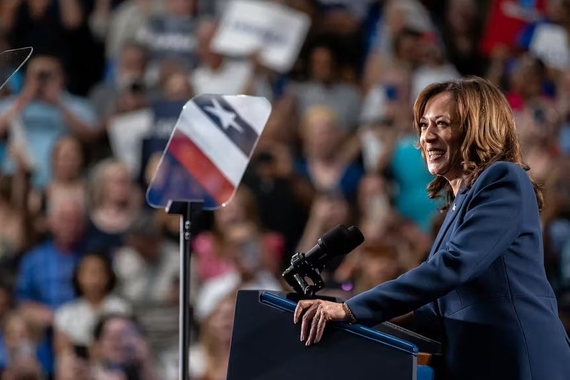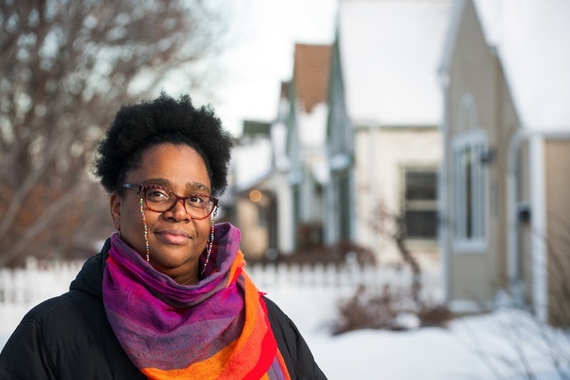Ask the Economist: A Conversation with Professor Emeritus Ed Foster
Professor Ed Foster has dedicated decades of service to the University of Minnesota – having served as director of graduate studies for economics, associate dean for the school of management and graduate school, associate vice president of academic affairs, and chair of the economics department. And even in retirement, his legacy lives on.
Here, he reflects on the journey to Minnesota, some of the most memorable experiences during his career, and why he supports the work of the Heller-Hurwicz Economics Institute.
What inspired you to pursue a career in economics?
I first planned to become an actuary, but learned from a summer job in a life insurance actuarial department that after getting the credential I would no longer be doing technical work; so, I applied for graduate school in economics instead. One of my teachers had gone to graduate school with Paul Samuelson and recommended that I apply to MIT where Samuelson was the leading faculty member, and I ended up there.
You’ve served the university in many roles, what are some of your most memorable experiences?
First is my relationship with David Lilly and the school of management. In 1978, having just finished an appointment to the Board of Governors of the Federal Reserve System, David was appointed dean of the school of management, at the time riven by internal dissension. To avoid seeming to choose sides in the internal fight, he asked then President Henry Koffler to suggest a candidate for associate dean who understood the U’s internal operations but was not a faculty member of the school. I was just leaving a three-year, half-time term as associate dean of the graduate school; Henry suggested me to David, we hit it off, and I became the full-time associate dean of the school of management for a five-year term. Essentially, I was the day-to- day administrator for the school while David set the overall direction, raised funds, and maintained relations with the business community of which he was a long-term well-known member.
Over the period from 1978 to 1983, tuition increases for the school were negotiated, external funding was increased dramatically, and the faculty was increased in size by about 50%, with a noticeable increase in quality. The undergraduate curriculum was also broadened to include liberal arts courses. The MBA program and extension short courses were polished and expanded. Then David moved on to become Financial Vice President for the University. I was interim dean for a year while a national dean search was underway, then returned for two years to the economics department before following David to the university’s central administration, for a five-year full-time term as associate vice president of academic affairs. So, the relationship with David led to a ten-year departure from the economics department and CLA.
Second, I spent a total of 14 years as director of graduate studies for economics, during a period when that job included being director of admissions and director of placement for the graduate program. So, I was deciding who to admit, usually serving as graduate adviser to newly admitted students for the first couple of years before they found thesis advisers, and then helping them to find jobs when they graduated or, in some cases, finding other programs to transfer to if they were not succeeding in our department. This put me in close contact with 200 to 300 students, in addition to my normal relations with students as teacher and research adviser in the 38 years I was on the economics department payroll.
What’s special about economics at the University of Minnesota?
The fact that the department is relatively small means that faculty take a personal interest in making sure that new graduate students are welcomed and become part of the family. Also, the relationship between the economics department and the Federal Reserve Bank of Minneapolis is a remarkable one. In the early 1960s a member of our department, John Kareken, became advisor to the president of the Federal Reserve Bank of Minneapolis. Over the years, that relationship built to one in which the university draws on the Bank economists to be part-time teachers in the department and the Bank draws on university faculty to be part-time consultants. The relationship has strengthened both organizations and provided opportunities for both student and faculty research.
Finally, the department is rated one of the strongest among the nation’s public universities.
Could you shed light on the significance of Professor Hurwicz in your life and why honoring him was important to you?
By “honoring him” you’re referring to the fact that Janet’s and my bequest was first directed to the Leonid Hurwicz fellowship. He was really the intellectual center of the economics department. I recall one contentious issue at a department meeting when he wasn’t present. At the next meeting he explained why he disagreed with the department decision, and pretty much all who had voted for the new policy flipped their votes! When Leo argued something, people generally agreed with him.
He was not just an intellectual leader, but also very conscious of the need to bring in young faculty members and welcome them; he made it clear that he appreciated my contributions to the department and did the same for others. Perhaps most importantly, he was an incredibly kind teacher, willing to spend as much time as needed to help any students having difficulty.
In considering the update and re-designation of your legacy gift in 2022, what were the key factors or pivotal considerations that led to the decision to support the work of the Heller-Hurwicz Economics Institute?
At the time, if you had asked the chairman of the department – as I did – “what’s the most important thing that the department needs?”, he would say graduate fellowships. I had been thinking that the Heller Hurwicz Institute (HHEI) was a very lean organization, and from conversations with the advisory board, directors, associate directors, and department chairs over the years, it was clear that it was a whole lot easier to raise funds for specific programs than for the essential back-room activities. I didn’t want HHEI to be handicapped by an underfunded back room. I was thinking of a term that most economists learn in school – roundabout methods of production.
Instead of using all your resources to produce your final goal, focus first on producing machines that will eventually be much more efficient: raise horses to replace sowing seed by hand, then build tractors to replace the horses. Roundabout methods are not always better, but they can be.
It seemed to me that funding for back-room operations of HHEI was pursuing a roundabout method of production that could eventually lead towards greater funding for the department’s priorities – graduate fellowships and faculty research – besides helping to meet other HHEI important goals.
Janet worked for a business that has since been spun off as Ameriprise but was then American Express Financial Advisors; she managed a cost-center, not a profit center. Being a cost center in a for-profit organization meant that she was always scrambling for money to run her department effectively; so, she understood that funding back-room operations is important and agreed with me. The fund we ended up directing our gift to isn't restricted to back-room expenses, but it includes them, which meets the purpose. Besides, it also helps toward the HHEI goal of serving as a bridge to bring policy-relevant research to those who may be able to apply it.
Your former students created the Ed Foster Fellowship in 2018 and now there is over $200,000 in that fellowship that is used to recruit graduate students. What an honor!
Some former students pursued the idea of this fellowship. I appreciate their energy in raising funds for a departmental priority, and I am grateful for their kindness in expressing their thanks to the department in this way.
After retiring from the university in 2008, I became active in the National Association of Forensic Economics (NAFE), an organization for economic consultants. Besides alumni of the department, the fellowship announcement went to friends of the department who weren’t alumni, and, through efforts of alumni who were also active in NAFE, to members of that organization. Some of my NAFE and other non-alumni friends contributed, so not all the funds came from former students.
What message would you share with folks who might be considering giving back to CLA?
It feels good. It broadens your focus beyond your personal self-interest and encourages you to think of others; and that’s a good thing. Moreover, you can be confident that your gift will be put to good use, spent as you intended to achieve goals that you support.
All in the Family
Ed: One of [my wife] Janet’s and my big adventures was a two-year detour to Colombia. The economics department was awarded a USAID contract to start a master’s degree program in economics at the University of the Andes in Bogotá, a school modeled after a U.S. liberal arts college with most reading assignments based on English language texts.
I was the first on-site “Chief of Party,” (a USAID term) with the job of establishing the program and choosing students to be funded for U.S. Ph.D. programs – there were only 3 economics PhDs in the country at the time. Janet and I went there in 1963 with a one-year-old child and came back in 1965 with a three-year-old and a one-year-old who was born there. The master’s program, started in 1964, still functions in 2024, drawing students from both Latin America and the U.S.
Janet: I was a young woman of the ‘50s who wanted to be a Pan American flight attendant, but I received an engagement ring when I was 21 which made me ineligible. Coming to Minnesota, I was anxious to finish my bachelor’s degree; I had always known growing up that I wanted the college degree. [Our experience] in Colombia inspired me to earn a CLA degree in Spanish and English, expecting to teach English as a second language – ESL; up until then, I spoke only “kitchen Spanish.” The demand for ESL teachers dried up, but it turned out that the CLA degree prepared me very well for a business career.
Help us discover solutions to global economic issues
Your support of the Heller-Hurwicz Economics Institute will help assemble a powerful team of talented economics faculty and graduate students, and will bring world-renowned economists to Minnesota to engage in, and grapple with, some of the most pressing economic issues of our time.



